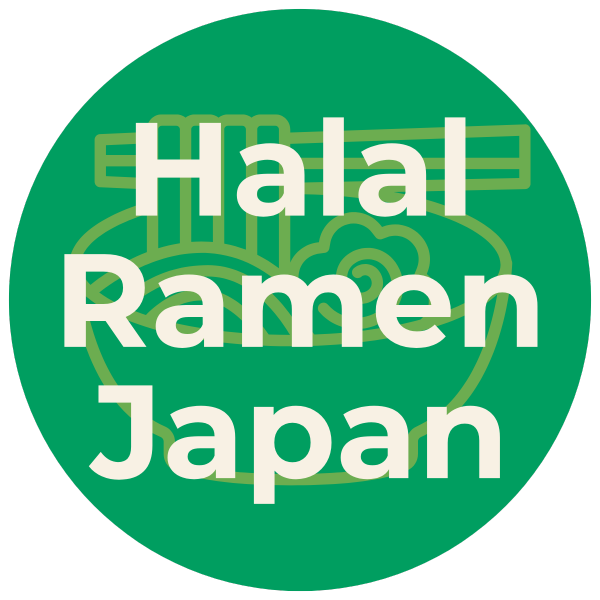The History of Ramen in Japan: From China to Soul Food
- Halal Ramen Japan
- Apr 2
- 8 min read
Updated: Apr 9
How a simple noodle dish became a national obsession

Introduction
Ramen is more than just a bowl of noodles—it embodies Japan's culinary journey, cultural adaptation, and the spirit of comfort food. While today it is considered a Japanese icon, its roots lie across the sea in China. This article traces the fascinating path of ramen, from its humble beginnings to becoming one of Japan's most beloved dishes, now enjoyed by millions around the world, including Muslim travelers seeking halal-friendly options.
Chapter 1: Chinese Origins and Arrival in Japan

The story of ramen begins in China, with hand-pulled noodles called "la mian." These wheat-based noodles were brought to Japan in the late 19th century by Chinese immigrants, particularly in port cities like Yokohama, Kobe, and Nagasaki. Early versions were known as "Shina soba" (Chinese soba), featuring clear broths and simple toppings like green onions and roast pork.
Initially served in Chinese-owned restaurants, these noodle dishes gradually found their way into the menus of Japanese eateries. The working class embraced this affordable, filling food, especially dock workers and laborers in urban centers. The dish was prized for its simplicity, speed of preparation, and satisfying nature—perfect for a population that was rebuilding and constantly on the move.
Chapter 2: Postwar Japan and Regional Innovation

Ramen's true evolution began after World War II, during a time of food scarcity and rebuilding. American wheat imports made noodles widely accessible, and black markets became hubs for ramen stalls. This period gave rise to experimentation, regional flavors, and ultimately the "local ramen" phenomenon.
Examples include:
Tokyo-style: soy sauce-based broth with medium-thin noodles
Sapporo-style: miso-based broth, often with corn, butter, and bean sprouts
Hakata-style: rich tonkotsu (pork bone) broth with thin noodles
Kitakata-style: light soy-based broth with flat, curly noodles
These regional variations reflected local ingredients, climates, and cultural preferences, turning ramen into a national obsession. Local pride became strongly attached to ramen varieties, and regional shops started drawing culinary tourism, with people traveling just to experience a particular area's flavor.
Chapter 3: Instant Ramen and the Global Boom

In 1958, Momofuku Ando revolutionized the way the world consumed noodles by inventing instant ramen. His company, Nissin, later released Cup Noodles in 1971, making ramen portable, affordable, and universally accessible.
Instant ramen became a pantry staple not just in Japan, but in college dorms and kitchens around the world. It was also a symbol of Japan’s postwar innovation and economic rise. Its long shelf life, ease of preparation, and low cost made it especially popular among students, travelers, and emergency food supplies.
Today, Japan has museums dedicated to instant noodles, such as the Cup Noodles Museum in Yokohama, attracting curious tourists from around the globe. Visitors can even create their own customized Cup Noodles, blending history with hands-on cultural engagement.
Chapter 4: Ramen as a Culinary Art Form

By the 1980s and 1990s, ramen had transformed from street food into a gourmet pursuit. Chefs began developing their own secret broths, handmade noodles, and signature toppings. Ramen shops turned into culinary destinations, and the dish took on the aura of craftsmanship.
TV shows, documentaries, and even movies like "Tampopo" (1985) explored ramen culture. Food critics began ranking shops, and fans lined up for hours to taste a famous bowl.
Modern ramen now includes:
Truffle oil or foie gras-infused broth
Vegan and gluten-free versions
Creative toppings like smoked duck, lobster, or yuzu
Some chefs have trained abroad and returned to Japan with international inspiration, further elevating the cuisine. International ramen competitions and ramen-themed travel tours have added to the dish’s prestige and cultural value.
Chapter 5: Halal Ramen and Cultural Inclusivity

As Japan becomes a more popular destination for Muslim travelers, the food industry has responded with inclusive offerings. Halal ramen is now available in major cities like Tokyo, Kyoto, and Osaka.
Common adaptations include:
Chicken or seafood-based broth instead of pork
Halal-certified meat and seasonings
Alcohol-free sauces and miso
Prayer spaces and English menus at some restaurants
Some ramen shops even provide clear halal signage, multilingual staff, and QR code menus for convenience. The rise of social media and halal-specific platforms has empowered Muslim visitors to discover and share trusted dining experiences.
Websites like HalalRamenJapan.com help travelers find Muslim-friendly options, supporting both tourism and cultural exchange. The growth of halal ramen also reflects Japan’s broader efforts toward hospitality and global outreach in preparation for events like the Tokyo Olympics and Expo 2025 in Osaka.
Conclusion
Ramen's journey from Chinese street food to Japanese soul food is a testament to how cuisine evolves across borders and generations. It has adapted to economic changes, regional traditions, global trends, and now, cultural inclusivity.
Today, whether it's served in a Michelin-starred shop or a corner stand, ramen remains a warm, satisfying bowl of history, flavor, and community. And for many—including halal-conscious diners—it represents the delicious possibility of connection through food.
From humble beginnings to global phenomenon, ramen continues to simmer at the intersection of tradition and innovation.
日本語訳文
はじめに
ラーメンは、単なる麵類料理ではありません。日本の食文化の進化、文化的適応力、そしてコンフォートフードとしての心を語る料理です。今でこそ日本を象徴する食へと成長したラーメンですが、その豊かな歴史は海を越えて中国に源泉を持ちます。
この記事では、ラーメンが起源となる中国から日本に渡り、地方の味と組み合わされながら百人百色に進化し、現在のような国民食として披露するまでの道線を追います。最近ではムスリム旅行者も安心して食べられる「ハラルラーメン」としても注目されています。
第1章:中国からの起源と日本への潜入
ラーメンの記史は、手引き麵で知られる中国の「la mian」から始まります。これらの小麦めんは19世紀末、港街の横浜や神戸、長崎などに渡来した中国人移民によって日本に伝えられました。当初は「支那そば」と呼ばれ、透明度の高いスープに青ネギやチャーシューなどのシンプルな具材を添えるスタイルでした。
当初は中国人管理の食堂で提供されていましたが、次第に日本の店舗や居酒屋、小規模な小食堂にも溜透していきました。特に港や都市部の労働者たちの間で、手軽で食べ得が良く、腹持ちも良いこの料理は大変気に入られました。
第2章:戦後日本と地域ごとの革新
ラーメンが本格的に進化を始めたのは、第二次世界大戦後のことでした。戦後の日本では食糧不足と復興の真っただ中にあり、アメリカからの小麦の輸入により麺が手に入りやすくなりました。非公式な闇市ではラーメンの屋台が多数登場し、人々の飢えを癒す大衆食として定着していきました。
この時代には、地域ごとの特色あるラーメンが次々に生まれました。例としては:
東京ラーメン:醤油ベースのスープに中細麺
札幌ラーメン:味噌スープにコーン、バター、もやしなど
博多ラーメン:濃厚な豚骨スープに極細麺
喜多方ラーメン:あっさり醤油スープに縮れた平打ち麺
これらの地域ごとのバリエーションは、地元の食材や気候、食文化を反映しており、ラーメンを「地域の誇り」として全国的に広めるきっかけとなりました。ご当地ラーメンを目当てに旅行する「ラーメンツーリズム」も生まれ、観光資源としても重宝されるようになります。
第3章:インスタントラーメンと世界的ブーム
1958年、安藤百福氏が「即席ラーメン」を発明し、ラーメンはまったく新しい形で世界に広まりました。日清食品から1971年に発売された「カップヌードル」は、手軽さと保存性の高さから日本国内外で一躍大ヒットとなりました。
インスタントラーメンは、日本だけでなく世界中の学生寮、キッチン、そして災害時の備蓄食としても欠かせない存在に。手軽に調理でき、長期保存が可能、価格も安価という点で多くの人々に受け入れられました。
現在、横浜にある「カップヌードルミュージアム」など、インスタントラーメンに特化した博物館も存在し、観光客にも人気です。来館者が自分だけのオリジナルカップヌードルを作れる体験型展示も魅力のひとつです。
第4章:ラーメンの芸術化
1980〜90年代に入ると、ラーメンは単なる大衆食から、職人による創造性が光る「グルメ料理」へと進化します。各地のラーメン職人たちは、独自のスープ、手打ち麺、トッピングにこだわり、店ごとの個性を追求するようになりました。
映画『タンポポ』(1985年)をはじめ、テレビ番組やドキュメンタリーでもラーメン文化が特集され、ミシュランにも掲載される店舗が登場。行列に並ぶことすらラーメン体験の一部として語られるようになりました。
現代のラーメンは以下のような創造性に富んだスタイルも含まれます:
トリュフオイルやフォアグラを使った高級スープ
ヴィーガンやグルテンフリー対応
燻製鴨肉、伊勢海老、柚子などの創作系トッピング
海外で修行を積んだ職人が逆輸入的に日本で店を開く事例もあり、国際的なインスピレーションが国内のラーメン文化をさらに進化させています。
第5章:ハラルラーメンと文化的共生
近年、訪日ムスリム観光客の増加に伴い、ハラル対応ラーメンの提供が進んでいます。特に東京・京都・大阪といった都市では、ムスリムフレンドリーな店舗が着実に増えており、ラーメンを安心して楽しむ選択肢が広がっています。
主な対応例は:
豚を使わず、鶏ガラや魚介ベースのスープに変更
ハラル認証済みの肉・調味料を使用
アルコール不使用の醤油や味噌を使用
英語メニューや礼拝スペースの設置
中には、ハラル認証マークを明示し、多言語対応のスタッフやQRコードメニューを用意している店舗もあります。SNSやハラル特化プラットフォームの発展により、ムスリム旅行者が安心して訪問・共有できる情報が増加しました。
Webサイト「HalalRamenJapan.com」などが、信頼できるハラル対応店舗を探す手助けをしており、観光促進と文化交流の架け橋となっています。ハラルラーメンの普及は、日本の「おもてなし文化」やグローバル対応力の象徴とも言えるでしょう。
結論
ラーメンが中国の屋台料理から、日本のソウルフードへと成長してきた過程は、食文化が国境や世代を越えて進化することを証明しています。経済の変化、地域性、グローバルな潮流、そして文化的多様性を受け入れながら、ラーメンは常に形を変えてきました。
ミシュランに載る高級店でも、町角のラーメン屋でも、一杯のラーメンには「歴史」「味」「人のつながり」が詰まっています。そしてハラル対応を含むその広がりは、「食を通じたつながりの可能性」を私たちに提示してくれています。
質素な始まりから世界的な現象へ——ラーメンはこれからも、伝統と革新の間で湯気を立て続けていくことでしょう。


Comments